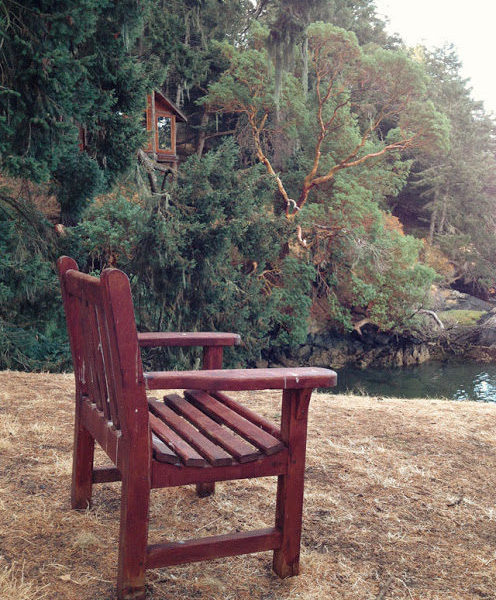Claude Monet
Oil on Canvas, 54.5cm x 64.5 cm
Private Collection
Impressionism is a 19th-century art movement that originated with a group of Paris-based artists. Their independent exhibitions brought them to prominence during the 1870s and 1880s, in spite of harsh opposition from the conventional art community in France. The name of the style derives from the title of a Claude Monet work, Impression, soleil levant (Impression, Sunrise), which provoked the critic Louis Leroy to coin the term in a satirical review published in the Parisian newspaper Le Charivari.
Impressionist painting characteristics include relatively small, thin, yet visible brush strokes, open composition, emphasis on accurate depiction of light in its changing qualities (often accentuating the effects of the passage of time), ordinary subject matter, inclusion of movement as a crucial element of human perception and experience, and unusual visual angles. The development of Impressionism in the visual arts was soon followed by analogous styles in other media that became known as impressionist music and impressionist literature.
Claude Monet, November 14, 1840-December 5, 1926.
Claude Monet was in almost every sense the founder of French Impressionist painting, the term itself coming from one of his paintings, Impression, Sunrise. As a child, his father wanted him to go into the grocery business, but his heart was in the profession of artistry, and at age 11, he entered Le Havre secondary school of the arts. During his stay at the secondary school, he was known for the caricatures he would draw for the locals for ten to twenty francs each. Five years later, he met artist Eugene Bouldin, who taught him the techniques of “en plein air” painting and became his mentor. At the age of 16, Monet left school for Paris, where instead of studying the great artworks of the masters, he sat by the window and painted what he saw outside.
When he was twenty-one years old, he joined the First Regiment of African Light Calvary in Algeria, for a seven year tour. But his stay was cut short after two years when he was hit by a bout of typhoid fever, and his aunt arranged for his release, as long as he continued his art studies. Upon his return to Paris, he studied the “en plein air” methods, along with Pierre-Auguste Renoir, Frederic Bazille, and Alfred Sisley, and developed the painting style that would soon be known as Impressionism. Upon the outbreak of the Franco-Prussian War, Monet fled to England, also traveling to the Netherlands before his return to Paris, after which he exhibited many of his works in 1874, at the first Impressionist Exhibition.
Upon the death of his wife Camille to tuberculosis after the birth of their second child, Monet was resolved never to life in poverty again, and was determined to create some of the best artworks of the 19th century. By 1890, he was prosperous to buy a large house and garden, where he would continue to paint for the rest of his life.
As a painter of controlled nature, Monet’s garden was one of his biggest sources of inspiration. As such, he wrote precise instructions for his gardeners, with specific designs and color layouts, and amassed a large collection of botanical books. At one time, he employed seven gardeners at once. After his death of lung cancer, his only surviving child, Michel, was heir to the Monet family property, which has since been restored and opened to the public, including the vast gardens.
An Art Bead must be used in your piece to qualify for the monthly challenge.



freshbakeddesigns
April 2, 2013 at 3:00 pmNo one does flowers like Monet! Sorry to have missed last month's. This challenge is going to be great!
You can call me Lyssa...
April 2, 2013 at 3:59 pmI've never participated in an Art Bead Scene challenge but this one inspires me to do so.
Impressionist painting is my favorite pre-20th century artform and coincidentally, just this weekend, I made the decision to begin experimenting with modeling Impressionist art in my lampwork glass beads. I want to participate in the challenge, but am not a jewelry maker, just a beadmaker. Must the beads be set in order to participate in the challenge? Also, your post says the deadline is January 31st. Is that just a typo?
Thanks!
— Aimee
TesoriTrovati
April 2, 2013 at 4:36 pmThanks for the eagle eyes on the date Miss Lyssa! I updated that. The deadline for submitting pictures to the Flickr pool for the random prize drawing is April 30th. The deadline for putting your pictures, with detailed art bead descriptions AND exact blog post URL for inclusion in the Monthly Blog Tour I curate is April 28th. (It takes me a few days to put the Blog Tour together!) We are excited to know that you are creating art beads based off masterpieces of art, but to enter in the Flickr pool you must make a piece of jewelry with it. This would be a good chance to learn some jewelry techniques to show off your great art beads! Enjoy the day. Erin
Jill Palumbo
April 20, 2013 at 2:02 pmBlogged about my piece here http://palumbojewelry.blogspot.com/2013/04/art-bead-scene-april-challenge.html Love this month's inspiration!